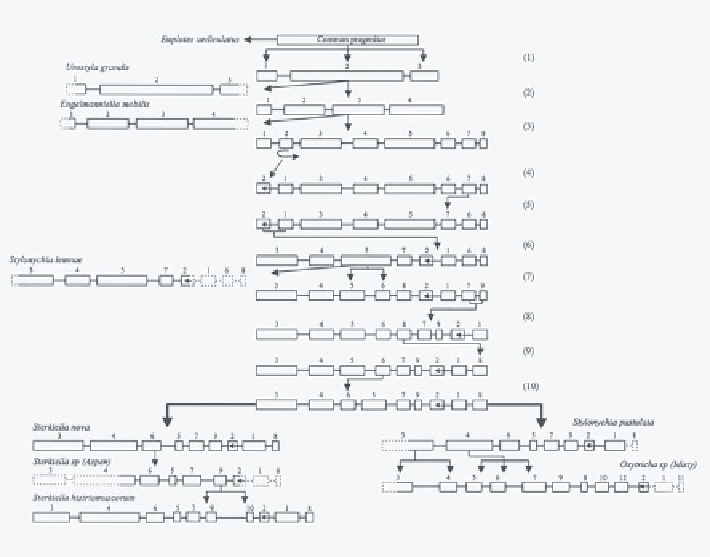Information Technology Reference
In-Depth Information
Figure 9.19
A scheme describing the origin and evolution of internal eliminated
segments (IESs), macronuclear destined segments (MDSs), and MDS scrambling in
the micronuclear actin I gene in nine species of hypotrichs. The scheme begins with
a common ancestor, which has no IESs in the micronuclear actin I gene.
Euplotes
derived from this ancestor without addition of any IESs. IES additions and recombina-
tions create an increasingly complex structure of the actin I gene during evolution of
the other eight organisms. The scheme ends in two branches, one branch ending with
three
Sterkiella
species and the other branch with
Stylonychia pustulata
and
Oxytricha
sp. (Misty).
the actin I gene; in the other line, IESs were progressively added in stepwise
fashion.
After two IESs had been added [1 in Figure 9.19], the line split, giving rise to
Urostyla grandis
, which currently has only two IESs and three nonscrambled
MDSs and a line in which a third IES was inserted [2 in Figure 9.19]. The
stichotrich
Engelmanniella mobilis
, with its three IESs and four nonscrambled
MDSs, diverged at this point. Evolution of the actin I gene continued with the
addition of four more IESs, creating a total of eight MDSs [3 in Figure 9.19]. A
series of IES recombinations inverted MDS 2 and scrambled the eight MDSs
into the order, 3-4-5-7-
2
-1-6-8 [4, 5, and 6 in Figure 9.19].
Stylonychia lemnae
,
which has retained this order of eight MDSs, diverged from the pathway at this

